How to weed your garden without chemicals: organic weed removal techniques
 Lee Burkhill: Award Winning Designer & BBC 1's Garden Rescue Presenters Official Blog
Lee Burkhill: Award Winning Designer & BBC 1's Garden Rescue Presenters Official Blog

Whether you're starting a new fresh or dealing with an established garden weeds are going to be a feature of all gardens that will need some attention to ensure a weed-free garden. Even in a brand new garden that's just been built give it a few weeks and unexpected garden weeds will show up. This gardening guide is going to show you organic methods to be one step ahead of garden weeds to keep your garden looking perfect all year round.
A garden weed is any wild plant in the wrong place. However, a weed doesn't have to be a wild invasive plant that we don't recognise. Sometimes our own herbaceous or annual plants happily 'self-seed' around our gardens and can become 'weedy' by their success rate!
A weed is a plant in the wrong place that's maybe outcompeting other plants or popping up where you don't want it, which leads to us needing to remove or weed them out. However, there are a group of commonly known plants that are nearly always considered as weeds, The dandelion or bindweed as accepted examples.
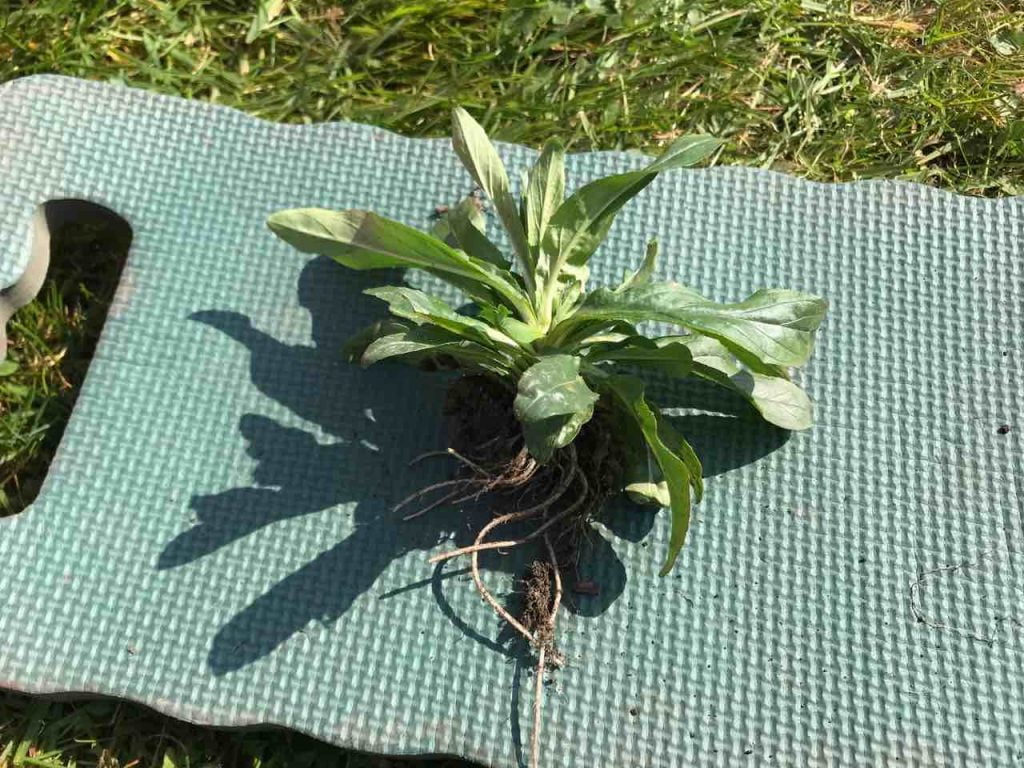
Weeds are often found in recently cultivated ground, ie soil that's been disturbed or worked on. This is usually because seeds of whichever weed has emerged have been lying dormant - waiting for the perfect conditions to germinate and then making their bid for freedom via growth!
Weeds may seem to pop up overnight and ruin your plans for the perfect garden. However, it is important to realise that there are two main types of weed you will encounter; annual and perennial. There are a few that are biennials that we discuss a bit later on.
There are annual weeds that live for one year and then perennial weeds that can survive many years and are tougher to deal with in the garden.
By understanding the type of weed you're looking at this will help you work out when to do something to stop the weeds from reappearing and will help you choose the method to remove the weeds. The methods for removing annual weeds do differ from the treatment of perennial weeds that come back each year.
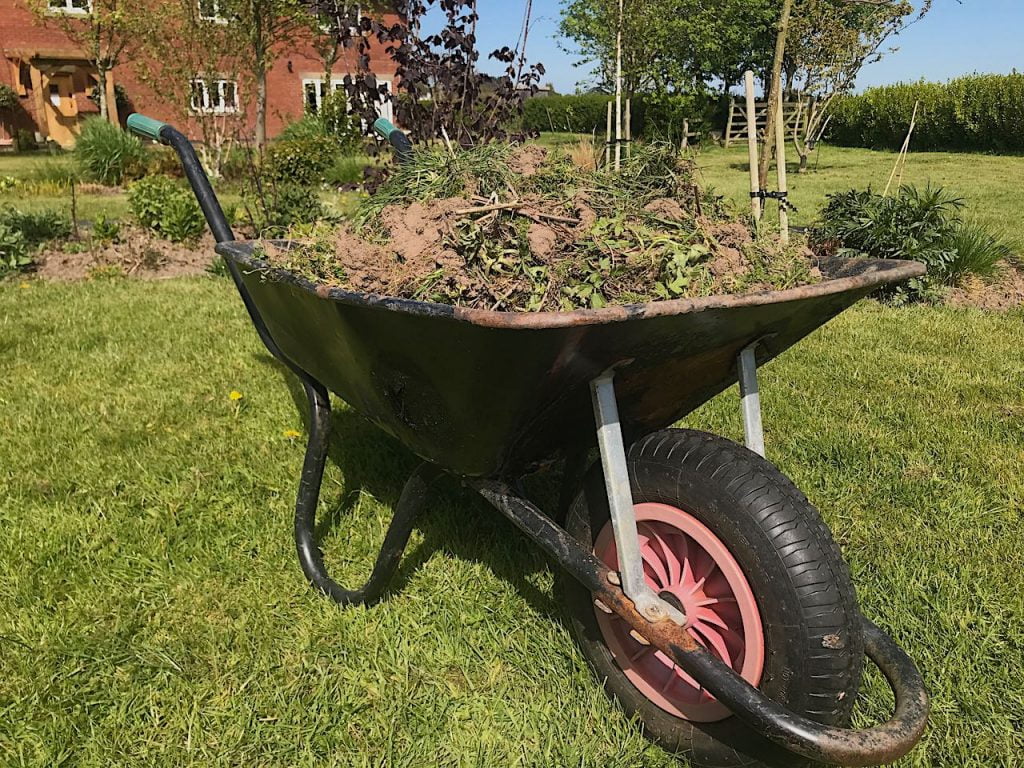
The first type of weed is the annual species. These annual weeds germinate, flower, set seed,m disperse seed and then die back each year. This is why they are known as annuals, as they only live for one annum. These are the fast and furious type weeds that seem to take over quickly. Often the weeds may have annoying seed dispersal methods where the seeds fire out when you touch them in the case of hairy bittercress (see picture below).
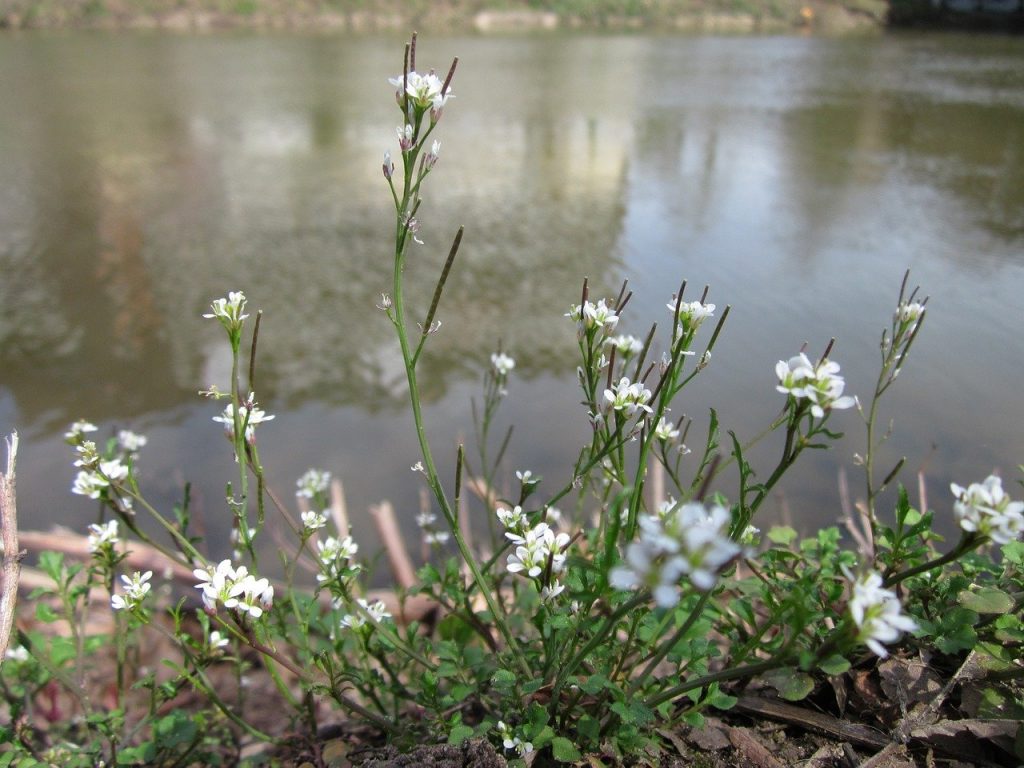
The trick with annual weeds is to get to them either before they flower or before they set seed. As soon as you see them using a hoe or hand weeder to cut them down at the soil level is best. This cuts off their water and nutrient supply meaning they won't set seed. I don't even remove them from the soil in most cases. I leave them there to rot back down and return the nutrients which they have stolen! Take that weeds!
With annual weeds, the best methods are using a hoe to cut them off at the base, using a weed burner or manually removing them before they set seed.
Did you know that you can take my course and learn how to become a Garden Ninja yourself? Click here for details
The next group is far tougher to deal with as these are the perennial weeds. The word perennial means they come back year after year. In most cases, these perennial weeds require complete removal as leaving even a small portion of the rootstock or weed in the ground will enable it to regenerate either this year or the next.
Perennial weeds often utilise long taproots, such as Docks or Thistles. This enables them to both anchors themselves to the ground and also sustain themselves as the long taproots can be hard to completely remove. They are clever suckers!
With perennial weeds, you need to get the root out which means manual methods are best. Using a hoe is pretty much useless as it only removes the top vegetative growth on these weeds and leaves the root intact. Meaning the perennial weed can grow back, usually with more vigour too!
The best way to get rid of perennial weeks is either with a Hori hori or a weeding tool. This means you can extract the entire root and make sure the weed is gone for good! With perennial weeds, if they go to seed then the job of weeding them increases in difficulty. When a weed goes to seed it is going to propagate at an alarming rate. Propagation is where plants multiply and seeds are the vessels they use to multiply! Removing perennial weeds before they set seed is always advisable to reduce next year's weeding.
Biennial weeds are similar to annuals but they usually spend the first year putting on vegetative growth before flowering and dying in the second year. Examples of biennial weeds are Hemlock, Hogweed and Spear Thistle.
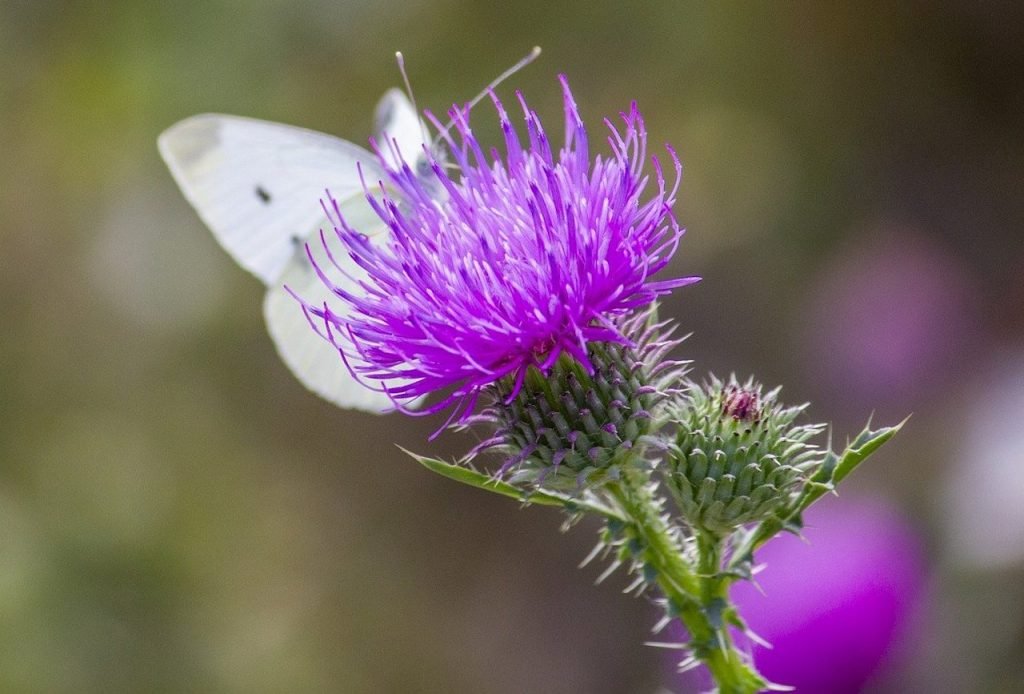
I tend to treat biennial weeds with the same approach as perennial weeds but they are worth noting for context when weeding.
The best method to get rid of weeds is by using manual methods. These are much more effective and environmentally friendly than sprays or homemade weed-killing potions. It also means that you can ensure you only remove the weed and don't impact other nearby plants or beneficial garden insects. The recent Paraquat lawsuit shows just why it's better to stick to the organic method than deal with the harm posed by herbicides.
I'm going to show you 3 different organic weed-killing methods. The first is using suitable manual tools, ie, not a trowel to get rid of them. The second is using matting to smother and kill off weeds. Lastly, I'm going to be showing and explaining why a weed burner may be the answer to helping you remove weeds. All without weed killer.
My preferred method to weed is using the correct garden tools to manually lift and shift plants in the wrong place! It may be tempting to reach for the bottle of weed killer, but they have been shown to have a really damaging effect on our wildlife and gardens.
Using a garden trowel is the least effective way of digging up weeds. This is because they are designed to lift large amounts of soil, usually to plant into not to remove smaller weed roots. The best tools for weeding are either a hori-hori or a Japanese weeding tool in my experience. This is because they cause the least disturbance and require minimal effort to get rid of weeds in your garden. Let's take a closer look at these tools.
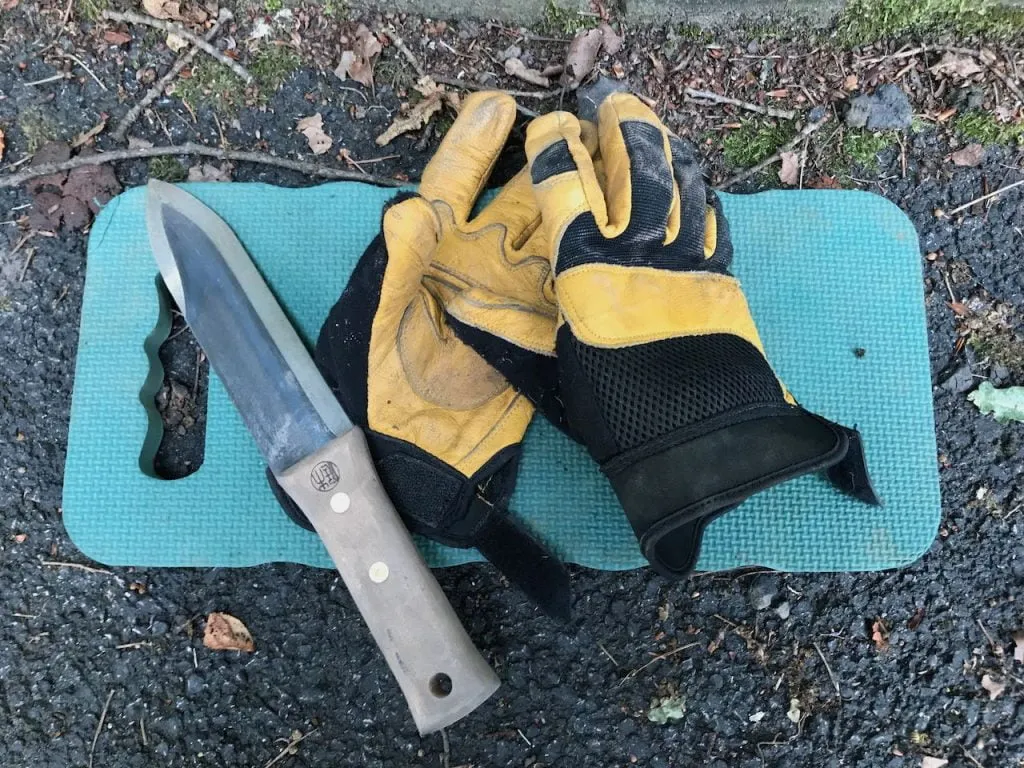
The hori-hori easily slices into the earth creating a minimal disturbance, thus reducing soil damage to a minimum. Read more on why minimally digging the soil with 'no dig' is so important here. You can also use it to weed around delicate plants, tree roots or in compacted heavy soil too.
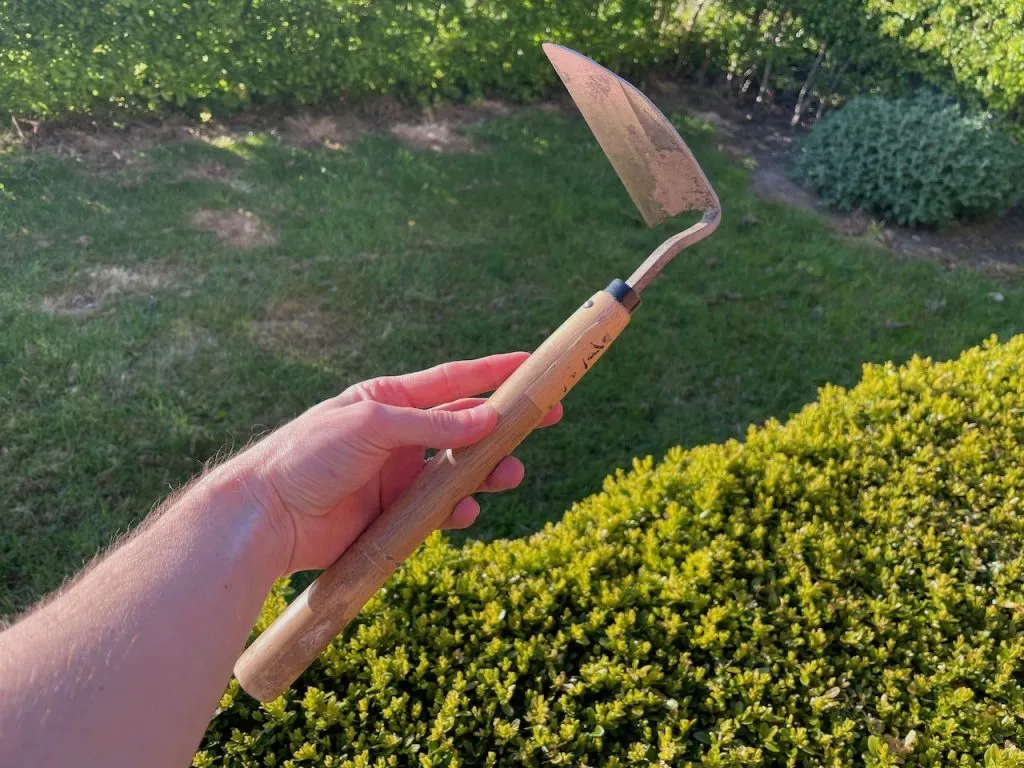
My second favourite tool is the Japanese weeder, it comes in right and left-handed models. It features a sharp hoe-like blade with a sharper point on the end. It means you can use it to hoe out weeds or use the sharp tip to slice underneath weeds and then pop them out of the ground. Again this causes minimal soil disturbance compared to the clunky trowel or spade.
For weeding larger areas, in particular annual weeds that just need their roots slicing through, then the oscillating hoe is the best tool for the job. It had a pivoting/moveable head with a sharp blade. This then cuts through the very top layer of the soil i.e. the area where the roots meet the weeds stem. Pulling it back and forth severs these roots and can help clear larger areas quickly of annual weeds.
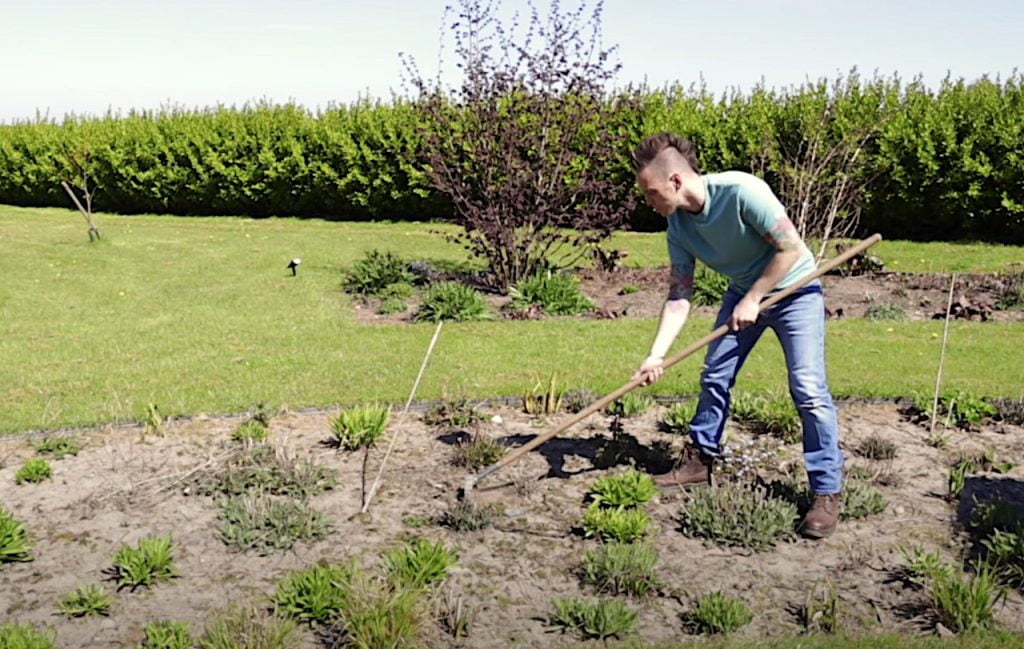
If you have a really large area full of weeds such as a path or large flower bed that's been overrun, then covering it with membrane or black plastic matting can help. This can be particularly helpful if you've just moved house to a new garden or have a large area of ground you want to cultivate ready for planting.
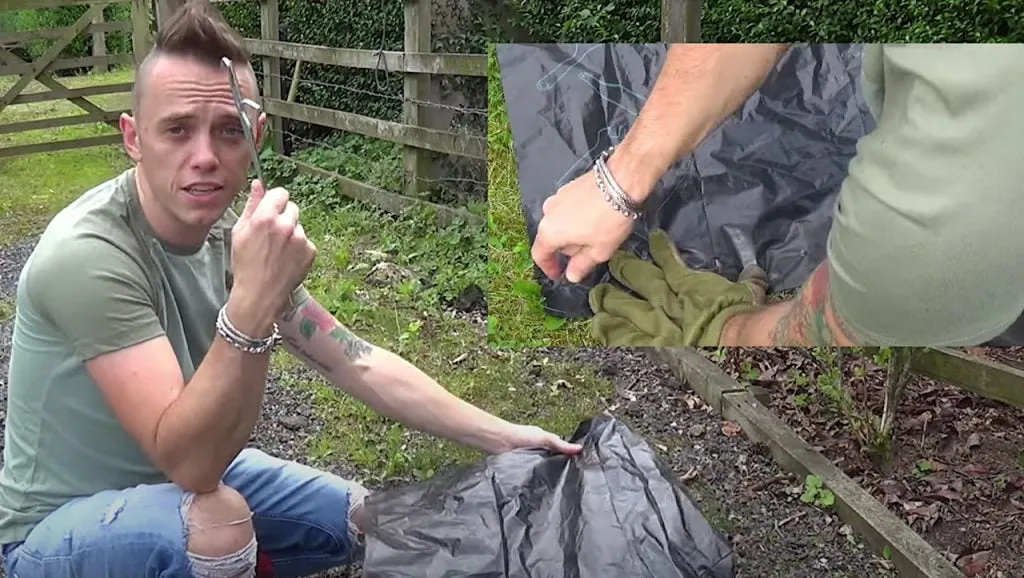
This method is not that suitable for spot weeding in between other garden plants. If you need to do that then choose either the manual method or the weed burner option.
You need to leave the matt or plastic down for at least 2-6 months, depending on the weeds, annual or perennial. Also the density of them. This method works by preventing light from getting to the leaves of the weeds which they need to photosynthesise. So it is important to choose a covering that doesn't allow light in. Clear plastic matting for example will be pointless.
Place either a weed membrane or black plastic sheeting over the weed-covered area. Then use either tent pegs or bricks to keep it in place and prevent light from getting underneath.
The next option is one of my favourites, as it eliminates bending over to weed the garden. Weed burners have become popular in recent years my weed burner video below has had over 550,000 views on YouTube!
The weed burner works by damaging the weed plant cell structures. A bit like chemical sprays but the benefit is that you can target each weed independently. It also doesn't 'drift' like liquid sprays or damage other plants.
Using a weed burner is easy. Simply pass the flame around 6 inches from the weed, never directly on it. When the foliage of the weeds turns a matt colour, it means the heat from the weed burner has damaged the cells. This then leads to the weed not being able to respire or photosynthesise, stopping its growth and causing it to die back.
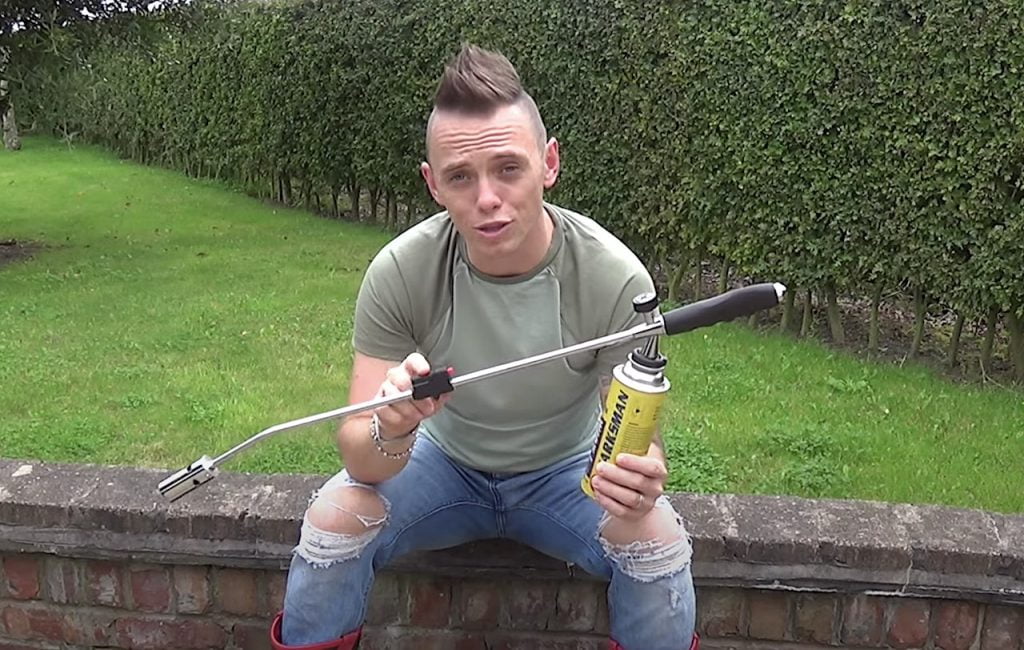
What you don't want to do is simply burn to a crisp the top 'green' part of the weed as this enables to root to regenerate more foliage the plant will treat the burnt leaves as dead so just grow more. It may sound mad, but you're only looking to damage the cells. This means that the root and foliage cant respire so will die as the plant can't regenerate. If you burn the leaves off fully then the root will simply send up more growth to replace it.
It may sound counterintuitive, but you're looking to exhaust the weed by preventing it from growing, not just burn the leaves off.
Watching my weeding guide below is the best way to see how they work and which will be most suitable. I show you each of the tools and how to correctly use them. Making light work of removing those garden weeds without damaging chemical sprays.
Using a weed burner is super easy, but again it's better to show you rather than just try and explain with words. The benefit of the weed burner is you can target specific weeds, and it saves bending over. However, you may need to make a few passes for particularly tenacious perennial weeds.
Always make sure you have protective equipment such as gloves and ensure you use the weed burner on a clear day.
It may be easy to reach for synthetic chemical weed killers when our gardens start to get overtaken by weeds. The main weed killer is glyphosate used in products like Roundup and most off-the-shelf weed killers from garden centres. Simply reaching for a weed-killer spray may feel like the most efficient way to get rid of them. However, there is a real dark side to using liquid weed killers in our gardens.
The biggest problem with weed killers is that they are totally indiscriminate on what plants and sometimes animals they affect. Given the fact that most of them come in sprays, it means even the slightest breeze will often cause weed killer drift where it then lands on other plants subjecting them to the same fate as your weeds.
Glyphosate is one of the most common types of weed killer. Glyphosate stops a specific enzyme pathway, the shikimic acid pathway. Meaning it prevents plants from metabolising resulting in them dying. Glyphosate can take anywhere from 7 to 21 days to fully work. You can usually tell by the browning of the leaves and collapsing stems on plants that have been treated with it.
Once the plant has absorbed glyphosate, there's no way to reverse it. It's game over.

Whilst it's incredibly effective in killing weeds, it also kills all other plants. So unless you're incredibly careful with the application you can end up killing off more than just the weeds. I've been to so many gardens where a gardener has used a spray weedkiller to go and polish off most of the surrounding plants by accident.
The same also occurs when it rains as the weed killer liquid can then run off and land on neighbouring plants, causing untold damage. Not to mention if it then leeches into watercourses, potentially harming aquatic plants and algae. All of these are part of the food cycle of wildlife, and upsetting this balance can have grave consequences.
You may have seen a whole heap of 'homemade weed killers' online and in forums. In fact, Pinterest is full of DIY weeding potions and concoctions to eradicate your garden weeds. However, these are usually misinformed and cause more damage than the weeds they claim to remove.
Some examples of these homemade weed killers are:

In my experience, these are a waste of time and energy to create. Having trialled some of them over the years (never bleach as it's super toxic for soil) there is a rather lacklustre success rate. In conjunction with this adding salt, vinegar, bicarb/baking soda or acid to your soil may kill weeds but it's also going to do a whole heap of destruction to the myriad of beneficial bacteria in the soil.
So although they may be homemade, I urge you to avoid this 'easy' option. It can be rather expensive, too, given the quantities of salt or baking soda you need. It's a faff and really damaging to the delicate balance of the PH of the soil and also soil structure.
Let's take a look at some of the common UK garden weeds you may be faced with. By knowing a bit more about them, we can choose the best organic weeding method to get rid of them. This list is not exhaustive on garden weeds and will be updated periodically. If you have a weed that isn't listed, then please get in touch with a clear photo, and I will add it!
This annual weed has a spreading habit that can mean it entangles itself around the bases of other plants. Meaning manual removal can be tricky. Also, Chickweed can produce seed up to 5 times a year with 1300 seeds being created from each plant every time! Which is a huge amount of weed seed! Annual Weed.
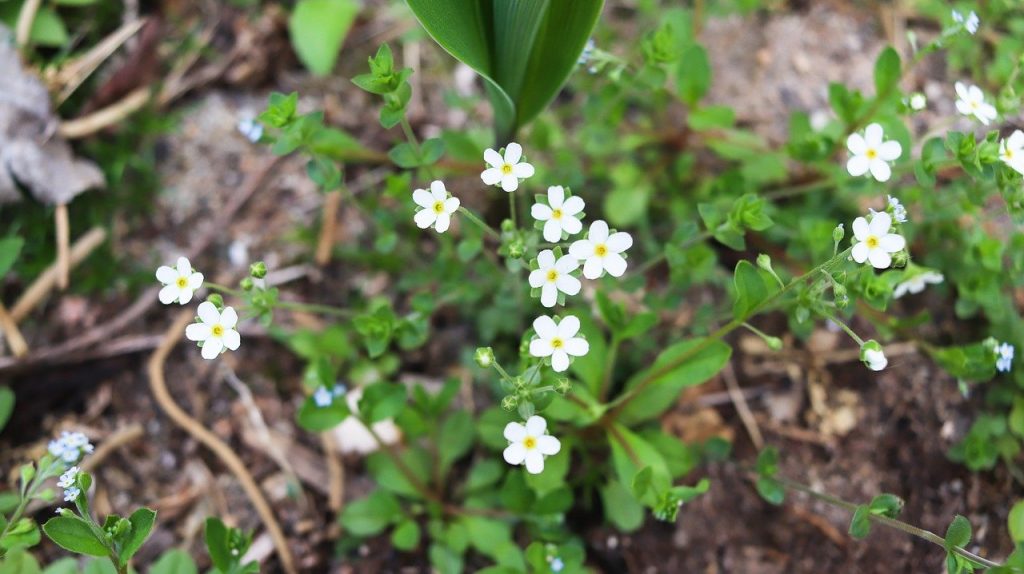
Thistles can be a beautiful plant genus in the garden, but this species is still considered a weed. Thistles are perennial weeds and after their beautiful purple flowers finish, they release hundreds of air-born seeds which is how they propagate/spread in the garden. Evergreen & Perennial.
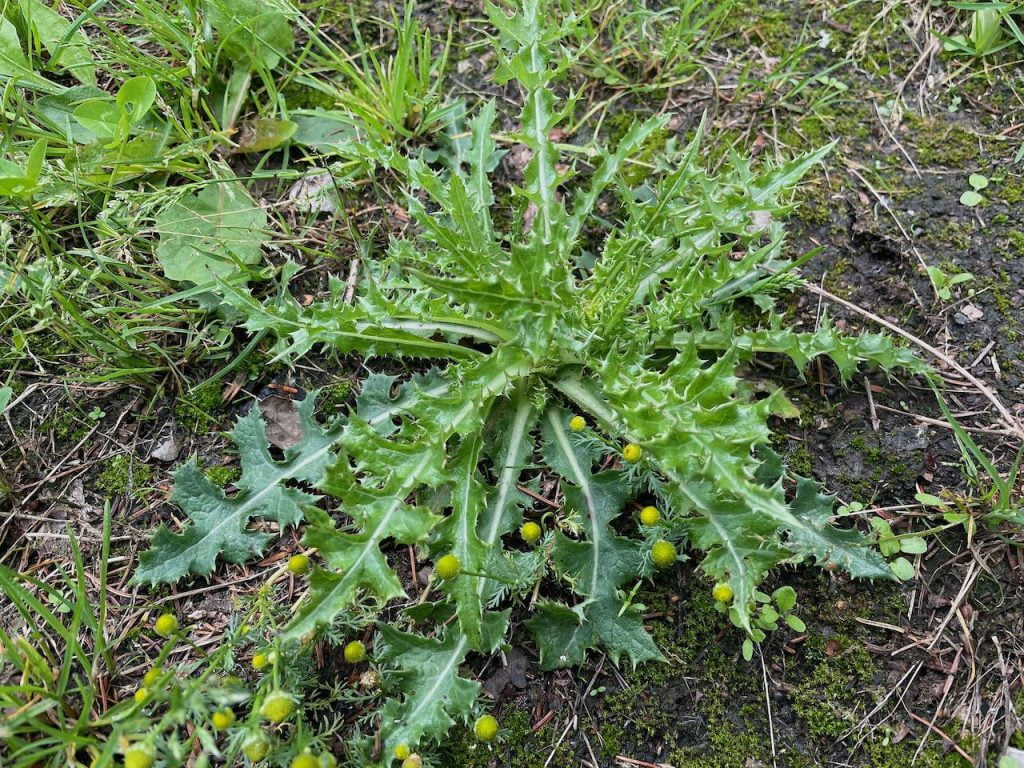
You can spot them before they flower based on their jagged spiny shiny leaves that sit like a crown directly on the surface of the soil. These weeds have a tap root so the best tool is the hori-hori to make sure you get the full root out. If you like the flowers, which are great for bees, you can leave some. Just make sure you cut off the flowers before they set seed.
Couch grass, also known as Bermuda grass in the USA, is one of the most frustrating garden weeds. This perennial grass uses an underground rhizome system. It has a habit of quickly wrapping itself into the roots of neighbouring plants. With couch grass, you need to get all of the root out. You can spot couch grass roots as they are bright white and fleshy. The best method is to use the hori-hori to carefully dig out all the roots. Do not compost couch gross as it can regenerate even in the most hostile conditions. Perennial weed.
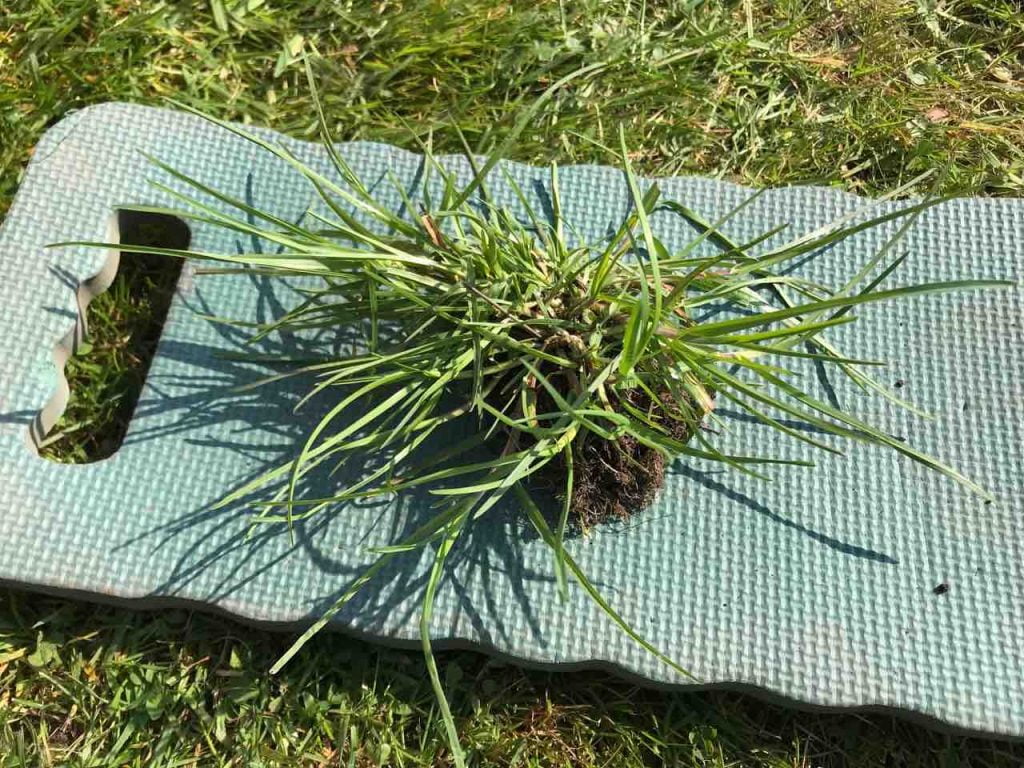
Bindweed's name lives up to the very nature of this pernicious weed. It twines and binds its way throughout plants' roots and foliage making it a tough weed to get rid of. Growing rapidly up to 1m per year. There are two types the more common hedge bindweed (Calystegia sepium) and field bindweed (Convulvulus arvensis). Hedge bindweed is identifiable by its beautiful white trumpet flowers. Field bindweed has smaller pink or white flowers and is less vigorous. Perennial weed.
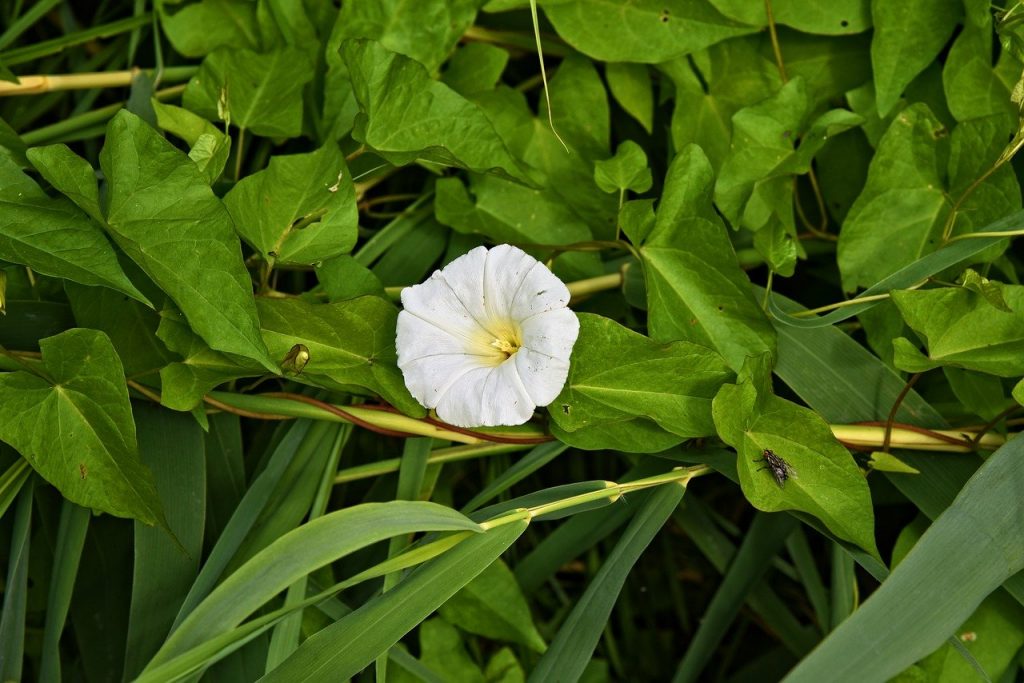
Bindweeds can climb through hedges, trees, or garden supports, which is how you can spot them. Like couch grass, you must remove all the roots and never compost bindweed. Unfortunately, you need to remove all traces of this weed carefully and sometimes it's best to take it in stages using a Japanese weeder. The weed burner is unsuitable as it is often intertwined with other nearby plants.
Probably the most recognisable of all the weeds is the common dandelion. A beautiful weed if I may say so, with its bright yellow lion-head-like flowers, which is where it derives its name from believe it or not! The flowers are edible and contain a lot of nutrients along with the leaves when blanched. You can even find them in posh salads or deep-fried!
That said, once the flowers are pollinated by bees or insects then, the trouble starts. Dandelions are a great source of early pollen and nectar for beneficial insects. So sometimes it's worth putting up with them for the variety of gardening benefits they bring.
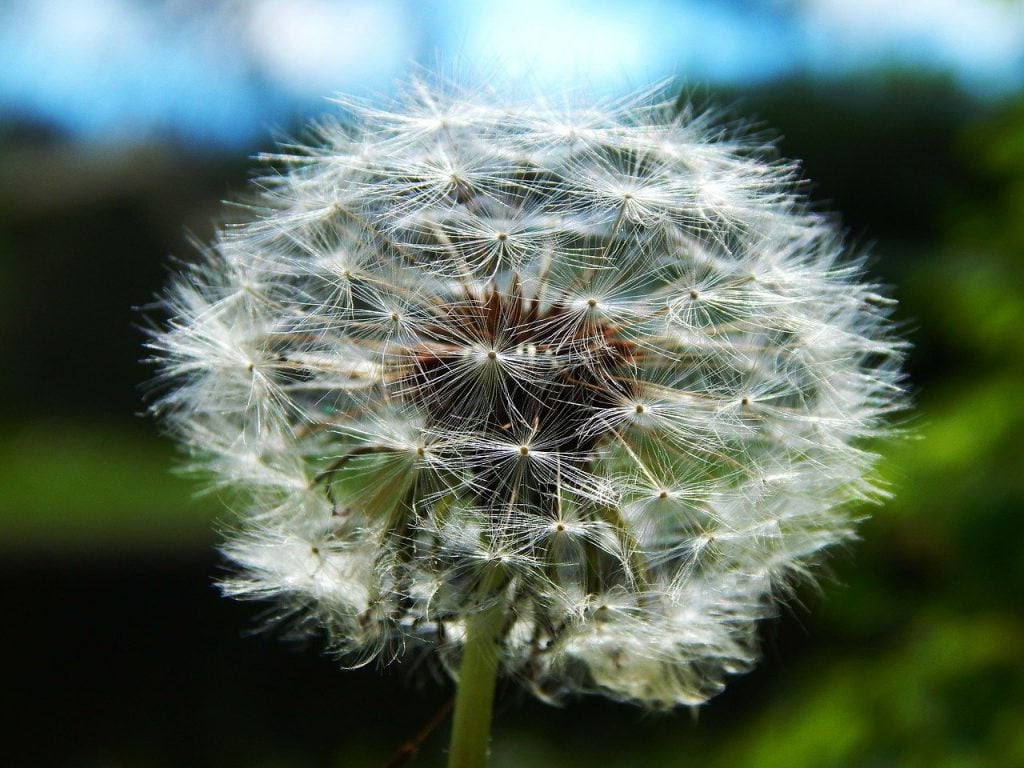
The seed heads are airborne and can spread like the wind and set seed all over your garden. The seed heads are sometimes referred to as clock heads. The seeds have little parachutes on them, enabling them to become windborne and travel significant distances on a windy day. They can also regenerate from the taproot, so you need to use a hori-hori to remove them fully. On hard paving, the weed burner is the best method of removal. Perennial with a taproot.
The creeping buttercup is the one weed I've battled with for years here at Garden Ninja HQ! In some borders, I've been successful in others, I've just succumbed to its tenacity and charm. Creeping buttercup spreads quickly through runners and offshoots. It creeps across the ground smothering other plants and getting intertwined. This makes removing it very difficult. It's also a quasi-evergreen in most gardens.
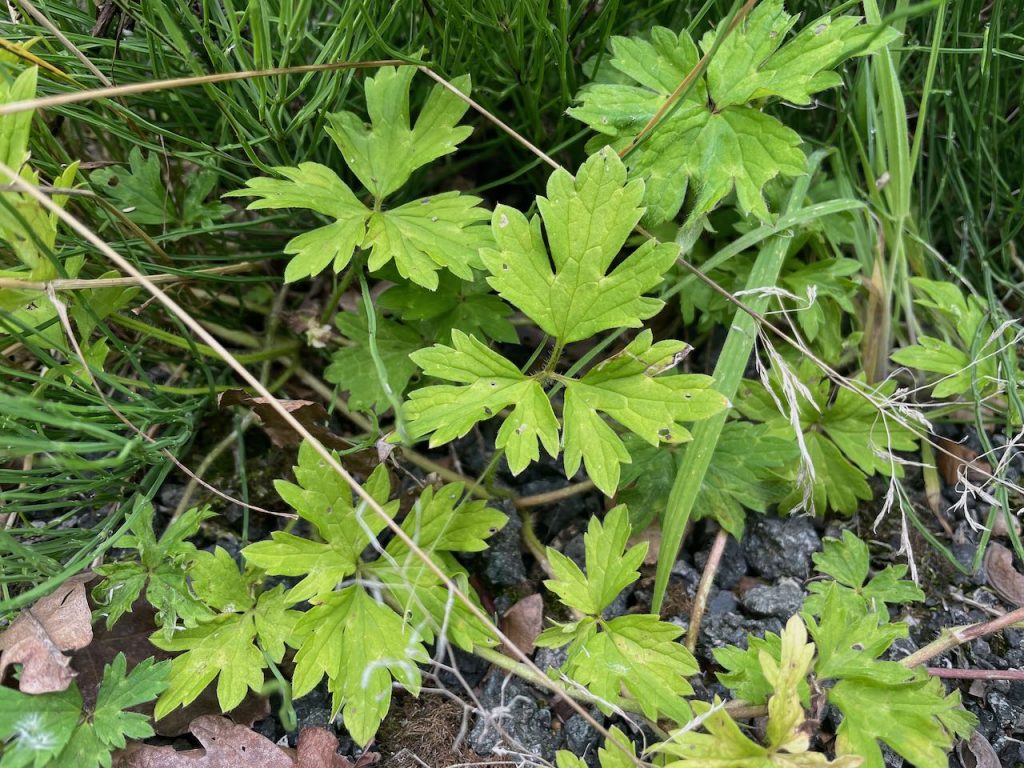
The best method is to use the Japanese weeder and pick through it. The root system uses shallow fibrous roots, so there are no tap toots to deal with. It has a bright yellow spring flower that is great for insects. Dealing with it quickly when it starts is the best approach, or using another heavyweight ground cover to try and outcompete it. Quasi Evergreen Perennial with fibrous roots.
The dock weed, sometimes called dock leaf or Sorrel, is one of the most recognisable due to its large glossy veined leaves. These weeds are the terminators of the gardening world. Featuring a huge taproot (see the picture of me above holding one with my tongue out! They are incredibly difficult to get out without a hori-hori to dig the root out. They flower in later summer, July to August, sending up spikes of tiny brown flowers. These then hold thousands of tiny seeds. This is their main root of self-propagation.
Docks are evergreen and can reproduce vegetatively via the taproot, particularly if you cut the foliage off or leave part of the dock root intact. Evergreen perennial with a taproot.
Nettles probably need no introduction. If you've ever fallen off a bike as a child into nettles or had your legs stung on narrow public footpaths, you will have sworn at nettles! Nettles offer a superb habitat for butterflies and moths. Their roots can be a real pain as they spread quickly. They also spread via seeds and their quite delightful flowers.
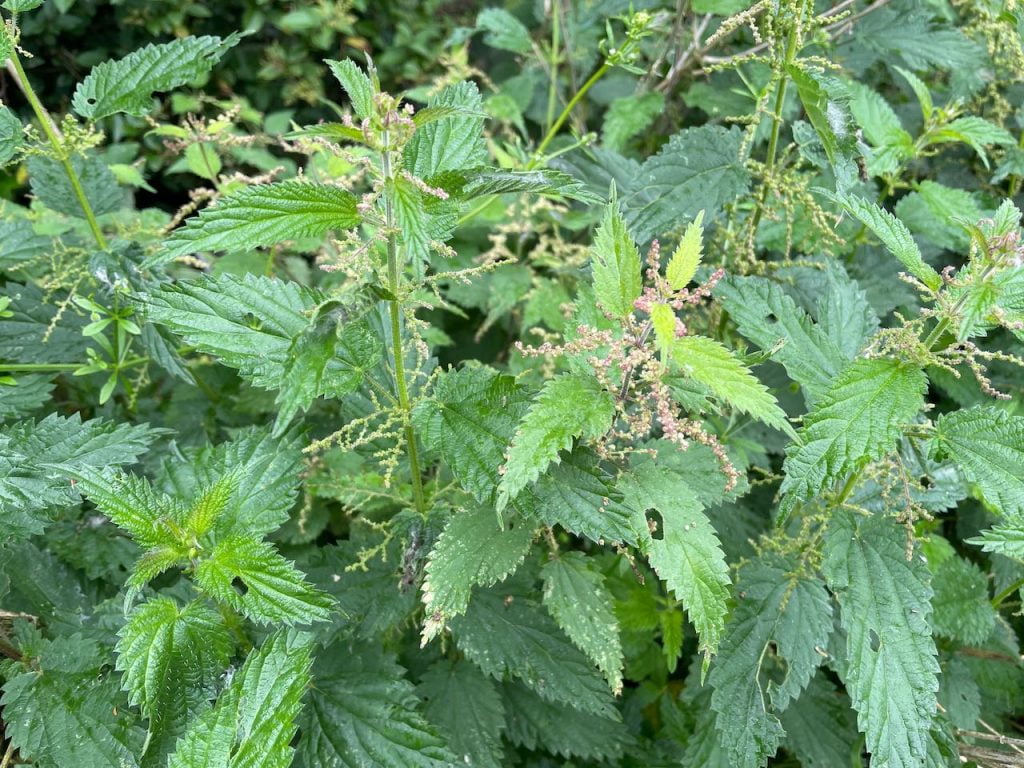
However, the best method to get them out, in my opinion, is to gently and with gloves start to pull on the stems of nettles. Their roots are not deep but tend to run and spread, so with care you can usually pull out nettles with care. Just ensure that you don't have bare arms or legs exposed, as you can end up stinging yourself by accident. Perennial rhizome stinging.
Rosebay willowherb is another beautiful weed that can easily be mistaken for a cultivated herbaceous perennial. It is less of a problem, in my opinion, to some of the other smothering weeds. In fact, I often leave sections of willowherb or fireweed in certain awkward spots to do its thing. The pink flowers are gorgeous and can light up barren spots or abandoned landscapes. Great for pollen-hungry bees and, in particular, moths.
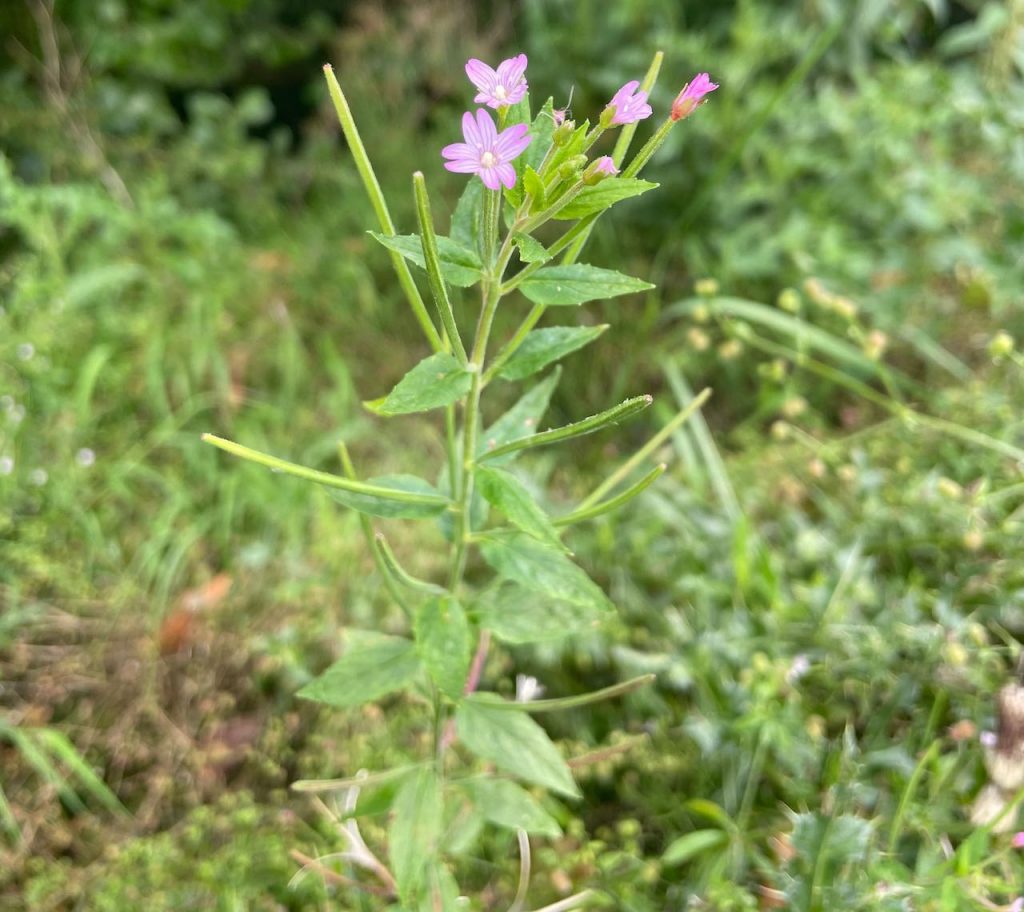
However, it self-seeds rapidly and uses underground rhizomes, so left unchecked can take over. The wind also disperses the seeds shortly after flowering. You can spot willowherb seeds as they look like small fluffy wands that easily spread on the wind. Use the Japanese weeder or the plastic matting approach to eliminate these. Perennial weed airborne seeds.
Clover is usually a problem weed for lawn enthusiasts as this is where it's most frequently found. Again, they provide a rich source of pollen for all types of insects. Clover, though is a fast spreader and its stems are both tough and smothering in flower beds. Known also as Trefoils due to their three leaves, clovers are a tenacious garden weed.
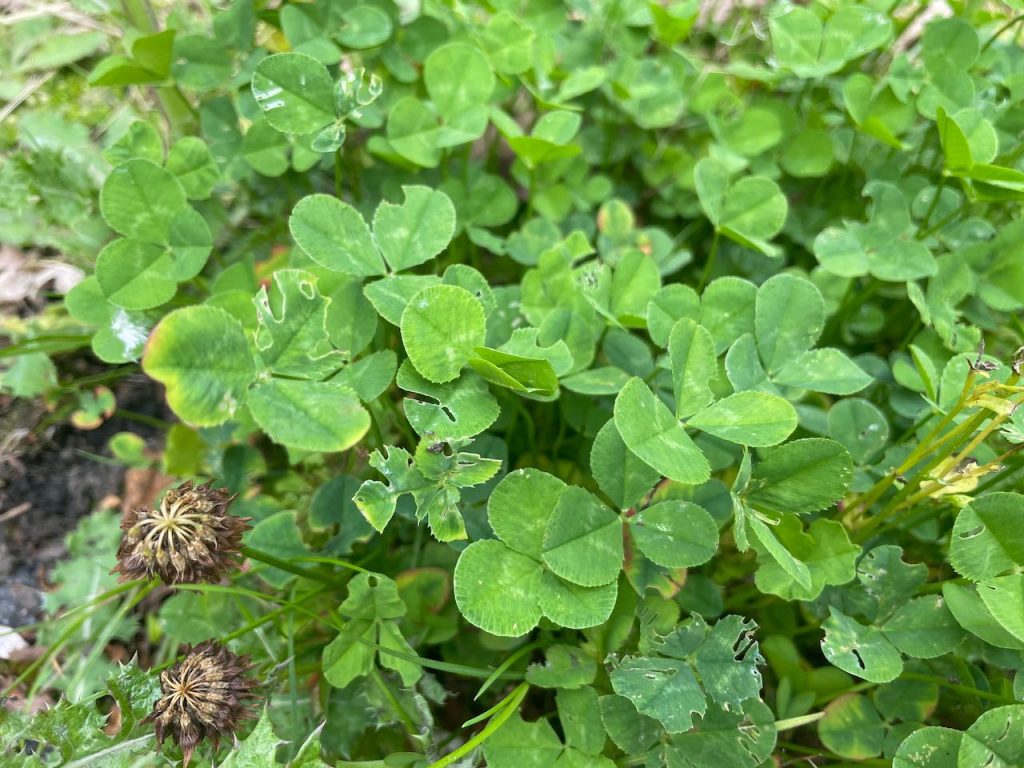
I tend to use the Japanese weeder to trace back their stems as they weave close to the ground. Then extract them carefully. You need the patience to unpick these weeds from your borders carefully. In lawns, I find that regular mowing prevents them from ever truly taking over. Perennial with fibrous roots.
Vetch is a tricky weed because I don't consider it to be one! Many others do and weed it out. Vetch is part of the pea family and is an exquisite plant in my eyes. It creeps and weaves a bit like a sweet pea through other plants. The purple flowers allow you to easily identify them as part of the legume family. It also helps fix nitrogen into the soil from the atmosphere enriching your borders.
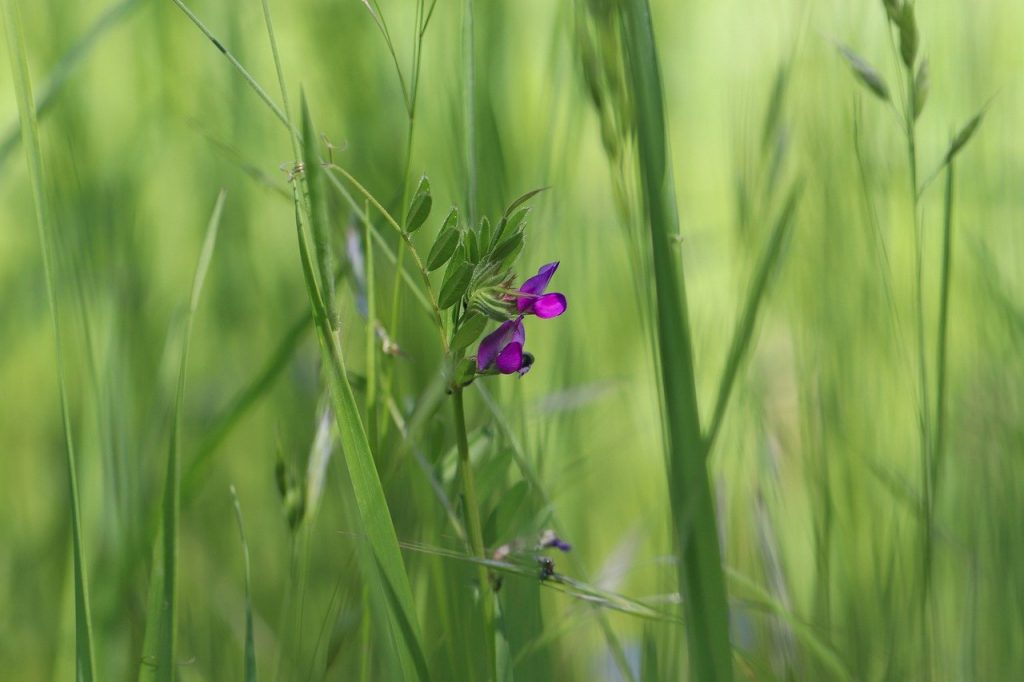
It can get a bit carried away, though, and some people weed it out. Personally, I would leave it alone for the value to wildlife. If you want it out, use a hori-hori. Annual weed.
Whilst it may be tempting to reach for the spray when it comes to garden weeds, I really would recommend taking a more considered approach. Nobody likes weeding, but these tips and tricks, it should make tackling weeds easier with more success. Whilst you may think using a weed spray is faster, the chances of you getting rid of the weeds and not impacting your other plants are low. It causes far more damage to wildlife than spending an hour to two manually weeding the garden.

By using organic weeding methods, we can avoid inadvertently harming other beneficial wildlife when we garden. It also means that we get to know our other plants better as we tend to them with a more focused approach!
Happy gardening!



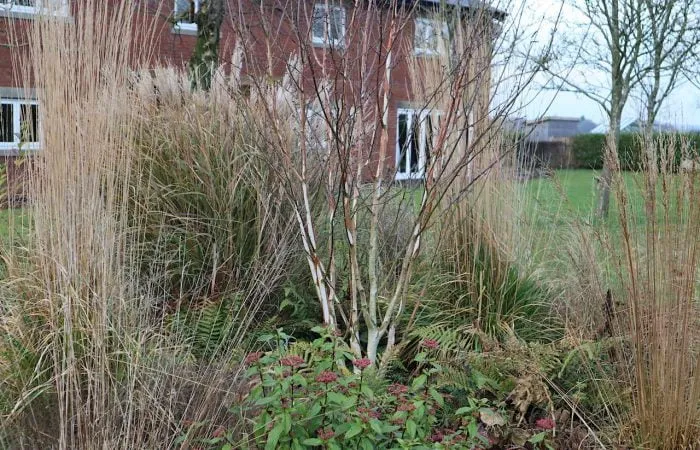
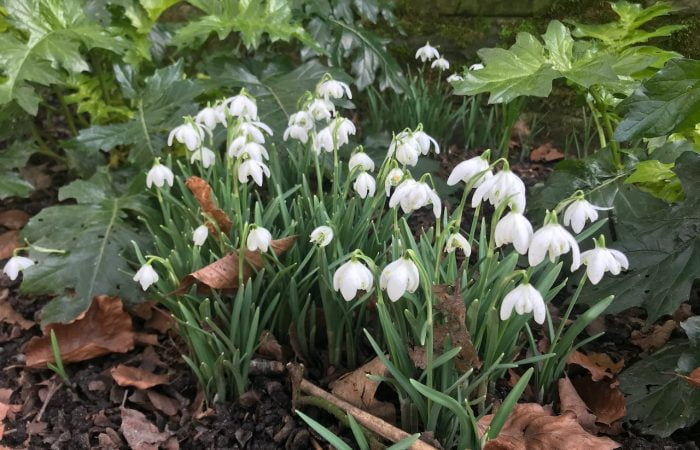
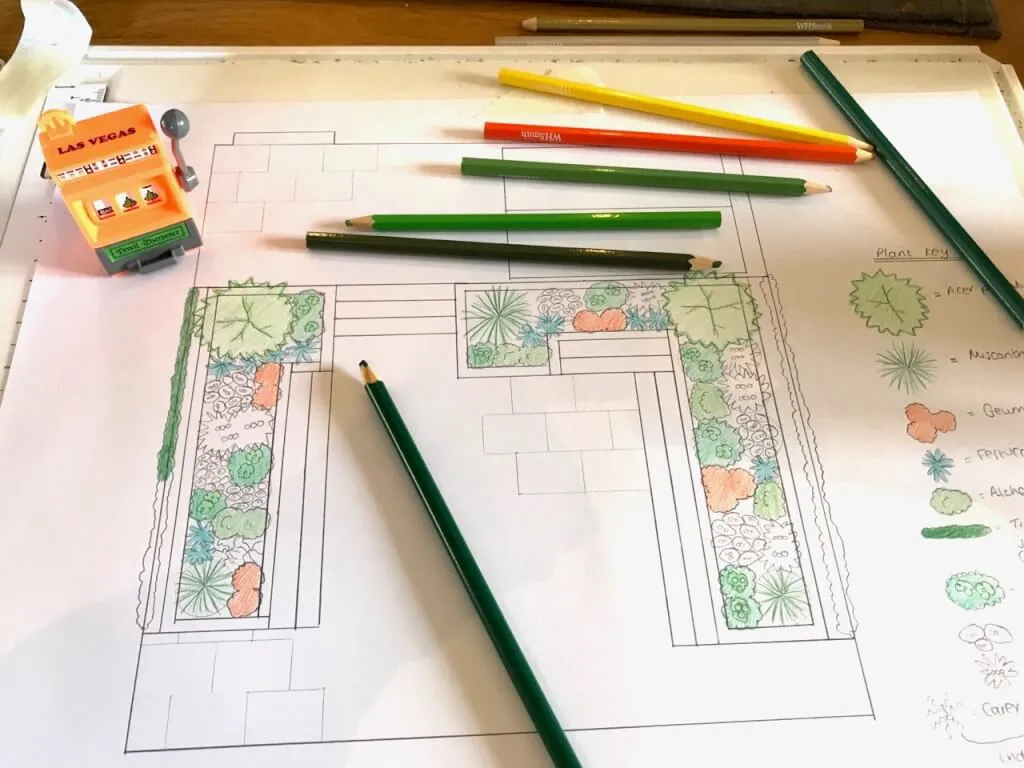
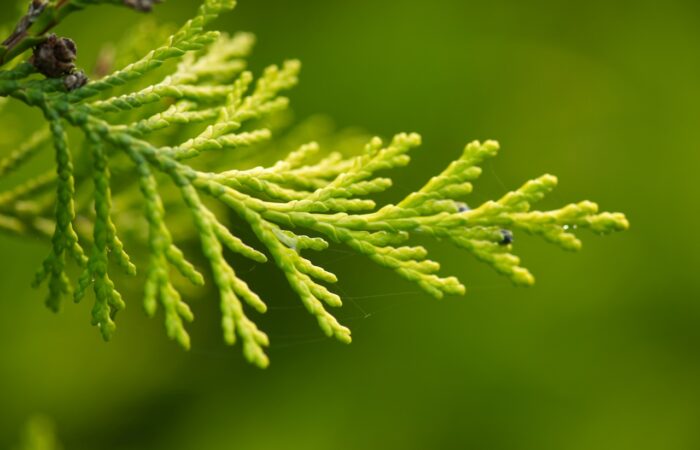

JOIN THE NINJAS

Be the first in line for new Guides, Discount codes and Offers